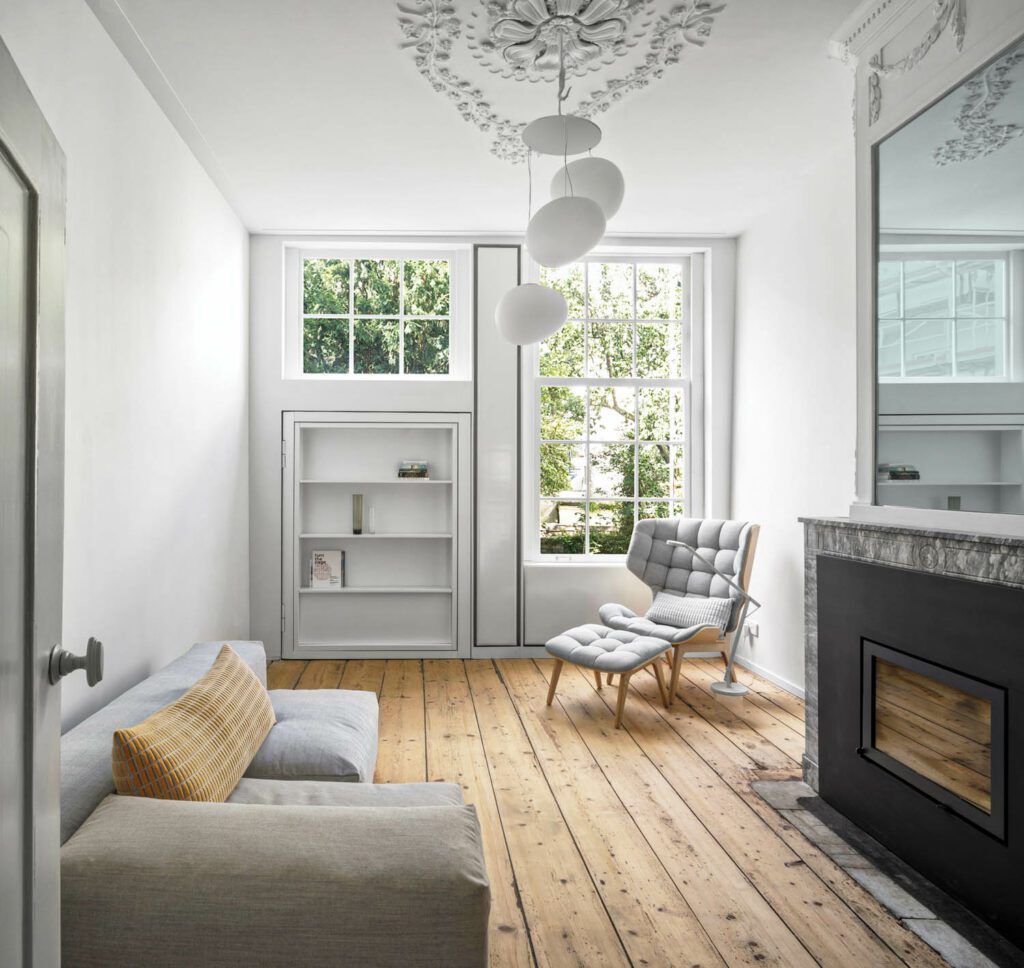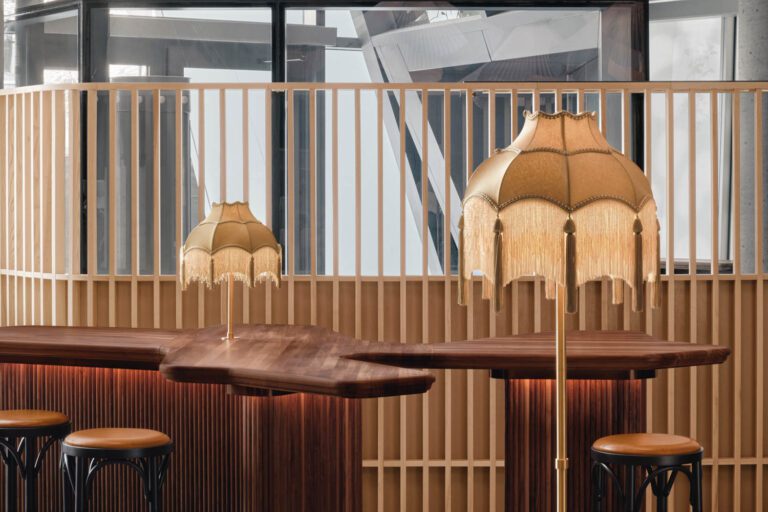
i29 Reinvents a Historic Canal House in Amsterdam
The archetypal canal house constitutes much of the Dutch city’s residential landscape. Dating to the 17th century, these four- or five-story waterfront row houses were conceived as hybrids: part living space, part warehouse storage for goods transported along the canals. They were built sturdily of wood and masonry construction with heavy beams, i29 co-founder Joeren Dellensen explains, “which is why they still exist.”
Albeit not always in the greatest shape. Take this compact 1675 house near Amstelveld square. Though designated a state monument, it had fallen into ruin before new owners initiated a meticulous two-year restoration and update. “From the start we knew i29 had to be involved in the project, to instill their out-of-the-box, serene, and perfect design,” notes the client, who first hired the firm nine years ago to craft an “invisible kitchen” for the family’s Paris apartment that was entirely concealed behind sliding wall panels imitative of decorative molding.
Here, architectural interventions were strictly limited by mandates protecting heritage houses. “We were not allowed to demolish any walls,” co-founder Jasper Jansen says, noting that the project was a collaborative effort among firm members. “And we couldn’t build any, either, even though very few existed in the space.”
Instead, color performs the role of spatial demarcation. “We used color as a tool to expose the architectural shell to the fullest and to make interventions that define functions,” Dellensen notes, adding that the classic hues chosen “are in sync with the monumental quality of the building.” Complementary blues, greens, and grays are muted and somewhat smoky, contrasting with swaths of crisp white.


The 1,240-square-foot interior, adjoining a rear garden, offers long sight lines and elements of delightful surprise. A steep, curving stairway, every bit original, connects the three full floors plus three intermediating half levels. The entry opens into a cozy seating alcove with wide steps down to the ground floor, which had to be lowered for foundation repairs. Occupying the majority of this level is the eat-in kitchen, where custom oak millwork is coupled with chairs by Naoto Fukasawa and lighting pendants by Ludovica and Roberto Palumbo. At the far end of the space, a green glass volume marks entry to a pass-through bathroom leading to a hidden bedroom with garden access.
Fittingly, the living room on floor two retains its characteristic plaster walls and bas-relief ceiling ornamentation, painted creamy white, and restored pine flooring. Behind the rotating bookshelf lies a surprise: a moody blue cocoon in which to read or relax. On the opposite side of the room is another surprise: Interior windows provide a split-level view of the entry seating nook below and the study a half-flight above, where a swath of springlike green frames the built-in desk.
Up on the third floor, “sleeping quarters radiate comfort like a true hotel experience,” Dellensen remarks. Exposed beams trace the peaked ceiling in the main bedroom. Two-way mirrored panels enclose the WC/shower stall, offering sight lines out (into the wet area’s Japanese-inspired soaking tub and beyond) but not in. Up a ladder, an additional mini level is squeezed in below the roof’s bell gable to function as the daughter’s bedroom. So enamored are the homeowners by their pied-à-terre’s charm that they are spending even more time there than they envisioned.



















PROJECT SOURCES
THROUGHOUT
read more
Projects
i29 Updates Classical Interiors of Landmarked Enlightenment Building in Amsterdam
In 2014, Amerborgh, an investment company with an interest in the arts, bought the landmarked Felix Meritis for use as a cultural center with programs to be supported by renting out its renovated rooms as event venues. C…
Projects
Kingston Lafferty Design Infuses a House in Cork, Ireland With Soothing Shades of Green
Gemstone greens—along with a spectrum of other bold, jewel colors—bring unexpected calm to a house in Cork, Ireland, by Kingston Lafferty Design.
Projects
Carlo Alberto Monteverde Designs Colorful Cultural Hub for Artists and Students in Amsterdam
Amsterdam, a beloved destination among backpackers and tourists, now is adapting to an influx of those with no plans to leave, including students and entrepreneurs. In response to the growing number of newcomers, re…
recent stories
Projects
Montréal’s Café Constance by Atelier Zébulon Perron Mixes Elements for Lovers of Ballet
Vintage elements and custom creations make this Montreal cafe by Atelier Zébulon Perron whimsical and stately.
Projects
Lichelle Silvestry Transforms a Haussmann Apartment into a Parisian Oasis
For a young couple in Paris, Lichelle Silvestry Interiors renovates a Hausmann apartment using a light color palette and earthy tones.
Projects
4 Sensorial Retail Locales Around the Globe
These four futuristic stores from around the globe show that modern clothing retailers are not looking back.





